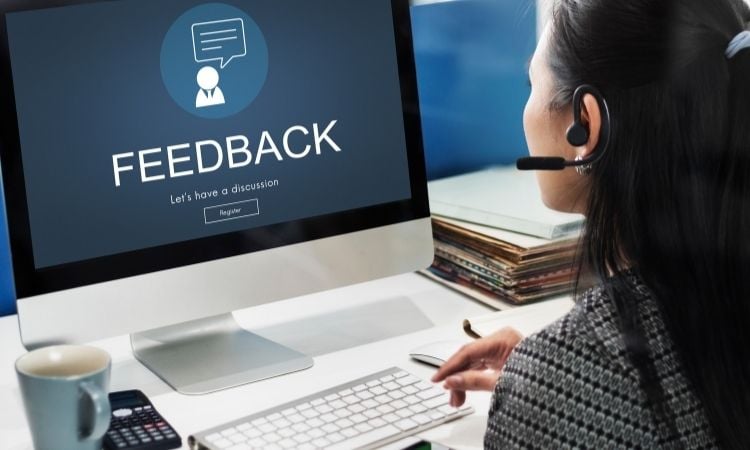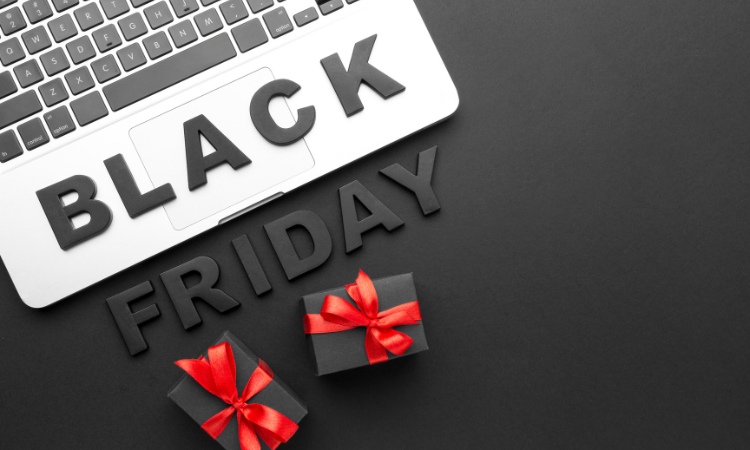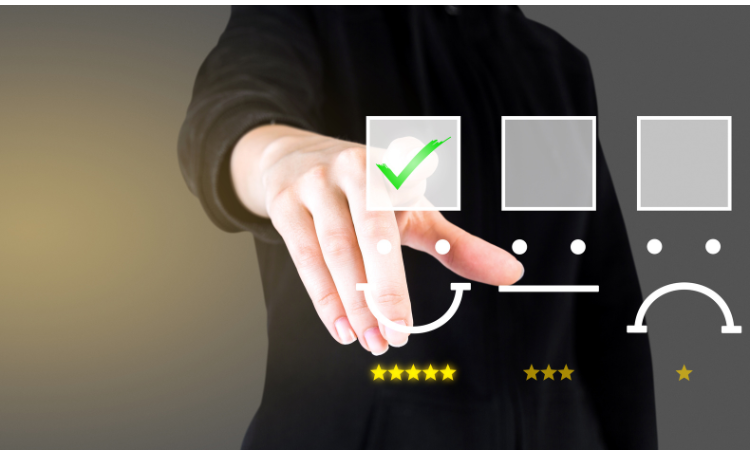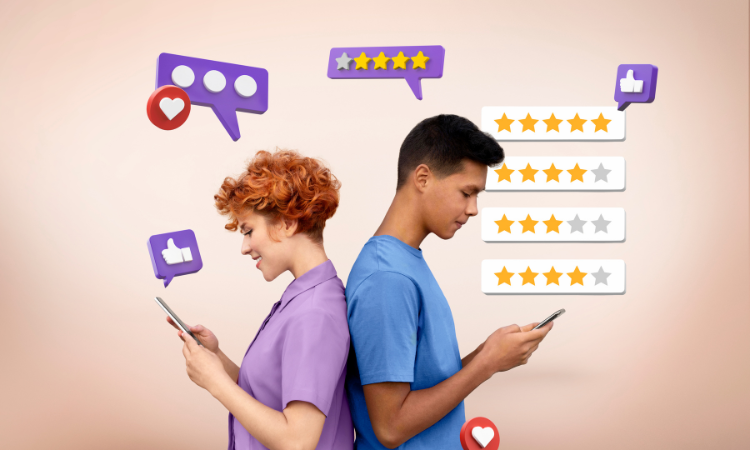You’ve built a business. You’ve worked hard to acquire customers, and to keep them. Believe me, I know it’s hard to acquire customers. It takes time, effort and some serious money. Marketing, advertising, sales – they can eat away at your budget. You’ve got to get a decent return on your investment.
All while you compete for your potential customers’ attention against millions of other marketing messages. The pressure is immense – and brutal. You need other ways of getting new customers. One way is to get your customers to tell other people about you.
That’s right, you need to leverage customer referrals, especially from your most enthusiastic customers.
Identify Customers Who Would Refer You
You want your most enthusiastic customers, the ones happy with you, to tell other people about you. But first, how do you identify these customers – the ones who will tell people how great you are?
Fuel Business Growth with Customer Feedback 🔥
Collect real-time, in-moment feedback at all touchpoints in customer journey and leverage feedback insights to transform customer experience.

Enter the Net Promoter Score®. The NPS® survey is a simple survey that asks your customers how likely they are to recommend you to their friends and family. The people who score you at a nine or a ten are your promoters or advocates.
The ones scoring you below a six are detractors and the ones in the middle, at seven and eight, are passives. There are a ton of ways you can make the most of your NPS survey: to convert detractors into promoters, to boost customer loyalty, to improve team performance – you get the idea.
But, you haven’t used your NPS survey effectively if you aren’t getting the most out of your promoters. You absolutely should make your happy customers even happier – your promoters make your business go around.
Your promoters are also your best bet at convincing others to do business with you. Why? Because customers who are happy with you are naturally inclined to tell other people about their great experience. Your promoters are your advocates. And because they get value from your business, they want your business to do well.
Segment and Target Your Customers
NPS® naturally segments your customers, but don’t be afraid to dig down further. The different NPS categories require different strategies, and customer segmentation can reveal many useful insights you can use. You should focus on your nines and tens, your traditional promoters.
But don’t forget to focus on your eights. Although your eights are categorized as passives, it turns out they may be happy to recommend you. They just need a little push in the right direction. There are also other ways to segment customers using NPS data that may reveal useful insights.
Here’s an example: you can use NPS surveys linked to other customer data to identify your long-time customers. The amount of time they’ve spent with you is a ringing endorsement of their faith in you. These customers can be your promoters too, not just the nines and tens. Don’t fail to capitalize on their goodwill. They are ideal to ask customer referrals from.
In fact, that’s what Evernote did. Evernote founder Libin studied the earliest customers and realized the longer customers used the service, the more likely they were to pay for it. Evernote worked to acquire new customers for free. And, they rewarded existing customers by giving reward points for successful customer referrals. Reward points customers could accumulate to upgrade to the paid version, Evernote Premium.
Not All Promoters Promote
Now, your NPS survey will tell you who your promoters are and what they think of you. But here’s the catch: just because your customers say they would refer you doesn’t mean they actually will. In short, all your promoters are not your advocates.
Consider this: how many messages to refer some company, some brand do you get daily? How many times do they ask you to share your rating or opinion on social media? How many times do they ask you to invite friends? Countless times. How many times do you click share, or send out that invite? Very few times.
That’s because you’ve got better things to do with your time. You’ve got to strongly believe in that brand to actually tell other people about it. Or, it’s got to be really worth your while. It’s the same for your customers. Why would your customers refer your company to other people? Getting customer referrals is no mean feat. This is why you need to encourage your promoters to actively promote you.
Still Go Through With It – Here’s Why
This shouldn’t discourage you though. The loyalty economics of promoters is phenomenal, and when they refer others to you, the referred customers display even better economic value. If economics is not your thing, here’s a simple reason to still work on these customers. People are more likely to trust a recommendation from friends and family – your promoters are your marketers.
That’s not all. People only refer things to other people if they think those people would like those things. In other words, they refer to others like them – meaning these referrals fall within your demographic market. This means your customer referrals are pre-qualified leads. The bottom line is customer referrals are a powerful tool and your promoters are the most powerful channel for improving your business performance.
Get Your Promoters Invested in You
Your customers will only refer someone to you if they think you have something amazing to offer. If their lives have been substantially improved by your company, they will want to tell other people about it. So delight existing promoters, help them make the most of your brand, product or service.
To make the most of your promoters’ ability to increase your customer referrals, understand what your promoters like about you. Use insight from NPS follow-up questions, and other strategically-conducted customer surveys to start the process of understanding what they like. Perhaps there’s a product feature they love, or a service that they can’t live without, or a price that’s just right. You can bet whatever it is, it gives them value, makes their life easier.
Once you’ve identified what those unique selling points are, work to make your promoters happier. Your promoters are likely to respond well to cross-selling across your company. Innovate to give them more of what they want. Engage with your promoters through different channels.
Educate them on product features, the newest updates, and other offerings that could add value to their lives. Include them in conversations across your company, from R&D, to marketing. Your promoters will feel like you care about their opinions, and are willing to put them at the heart of everything you do.
What’s more, you never know when some enthusiastic fan gives you a goldmine of an idea! And of course, the more they know and love about your brand, the more they tell their friends and family.
Ask for Customer Referrals at Key Moments
Once you’ve identified and engaged your promoters through your NPS survey, approach them at key moments when they are likely to recommend you. Just after the NPS survey is a good time. Your customers are thinking about you favorably enough to give you a high rating. You may as well capitalize on their warm, fuzzy feelings.
You can send a simple request to share or refer right after your NPS survey through your feedback app, email survey or online survey. By using dynamic survey questions, you could create a survey that automatically sends the request when respondents rate you a nine or more. That’s the magic of survey logic – it makes your survey responsive and engaging.
You can also ask for referrals after successful transactions or customer journeys. Transactional NPS surveys would help you gain insights on who to approach. For example, if you provide a service, send an NPS survey to find out the customer satisfaction level.
Approach those that rate you high on the scale with a request for referral. Tailor your request to provide an incentive that the customer would find particularly valuable.
You can examine your NPS data to discover patterns and trends. Perhaps your customers rate you highly at a certain time, or after a certain transaction or customer interaction. Time your customer referral requests according to patterns that the data reveals.
Offer the Right Rewards
Make sure you offer the right incentive. Many customer referral programs offer double rewards, for both the customer referring and the new customer. With tools like ReferralCandy, you can choose from cash rewards, service upgrades, or product features, depending on your type of business. NPS can help with this too. Use insights from NPS follow-up questions to provide rewards that your promoters particularly value.
For example, Dropbox offers extra cloud storage space to customers when they refer their friends. This is something Dropbox users value, and acts as a great incentive for their customer referral program. Guess what else Dropbox did to encourage their customers to refer their friends? They introduced shared folders that users could invite others to share, and consequently, try Dropbox for themselves.
You can also use insights from your customers' NPS surveys to offer tailor-made rewards or particularly useful services at that stage of their customer journey. For example, Uber offered free rides to Boston Public School students during the bus strike of 2013. They generated positive publicity.
And by offering a specific, tailored, reward to their customers they met their customers’ needs. The result: their popularity soared immediately afterward. They also offer free rides for customer referrals by riders and have a tailored customer referral plan for drivers.
Don’t forget to thank customers who bring new business your way. Identify promoters who are advocating on your behalf. Acknowledge and appreciate their effort. These customers like something about you. That’s why they took the time and energy to refer others to you.
They put their reputation on the line to recommend you to others. Don’t take their advocacy for granted. Offer them incentives they’ll value, but also reach out to these customers to give them personalized thanks.
Continuously Analyze and Adapt
This isn’t the end of your customer referral program. You’ve identified customers for your referral program, engaged with them at key moments. You also need to track the success of your referral program. In fact, you may already have a customer referral plan in place.
You may already know who your promoters are. But you’ve realized your plan isn’t working as well as you’d like. You’re asking why would your promoters recommend others to you.
What’s the point of collecting all that NPS data and insights if you can’t use it to reach out to your customers in personalized, effective ways? A customer referral program is a loop, just like a customer-centric NPS program is a loop.
Once you’ve established your customer referral program, you need to continuously monitor your program to judge its effectiveness. You need to keep track of your customer relationships, who’s referred whom, how well the math works, etc. You need to be able to tweak strategies and personalize interactions as needed.
A referral program helps you create a customer-centric focus – so does NPS. Together they form a great combination. A combination you can use to leverage the power of customer referrals to boost sales and increase revenue.
You must continuously monitor customer relationships through customer feedback and NPS surveys. A comprehensive feedback management software can help you create a customer-centric organization. To learn more about using NPS effectively, check out this NPS survey guide.












